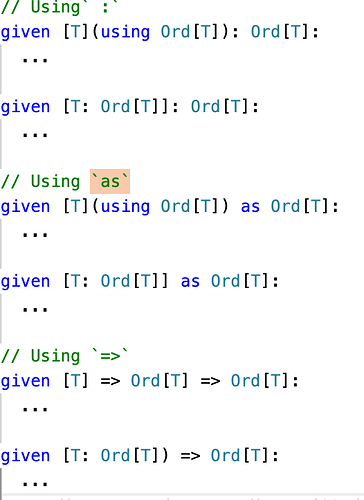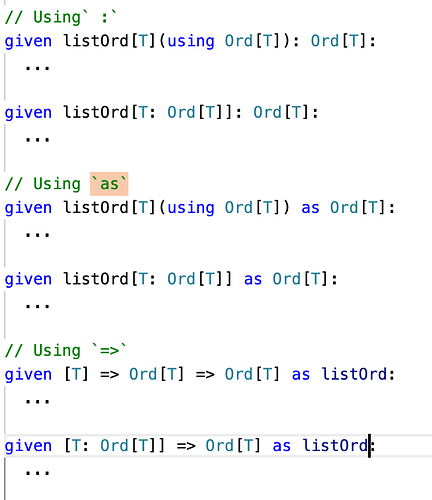There are two issues with using : instead of as
- it does not distinguish visually well enough between the parameters and the thing we are defining.
- it looks weird with indentation syntax which by now is a given (forgive the pun).
Here’s a screenshot that shows the difference.
And here’s the same with named instances:

